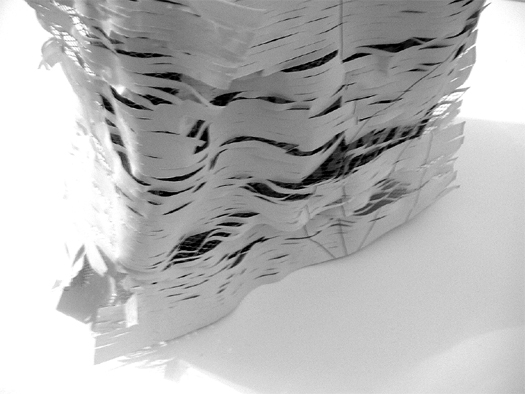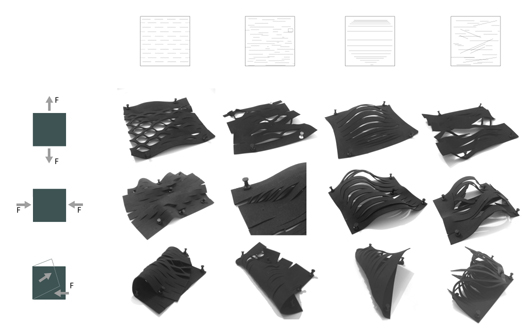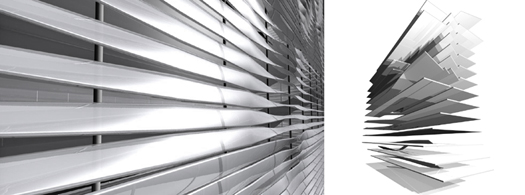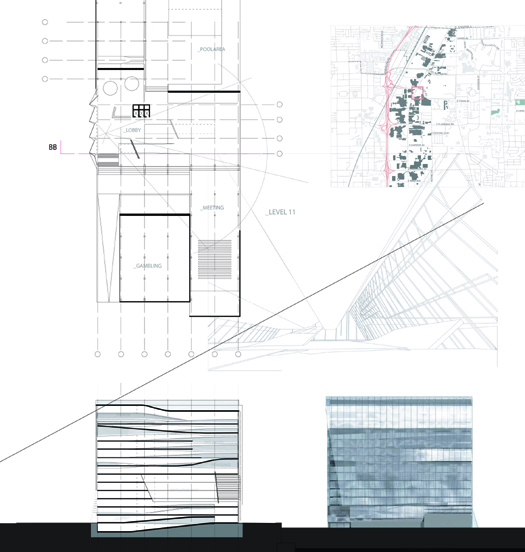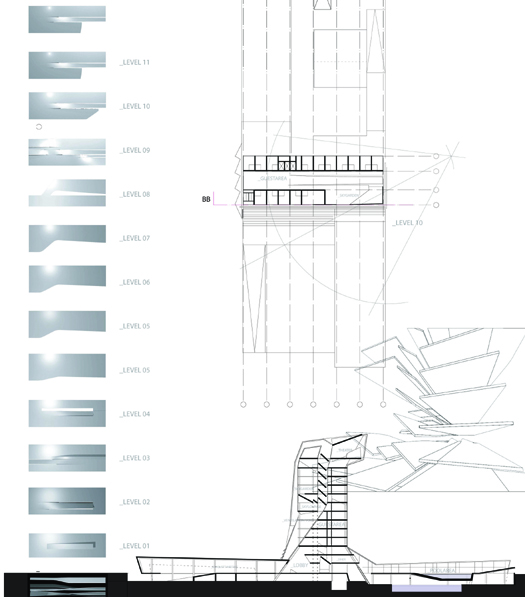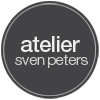Flux in Architecture – Sustainable Architecture and the logics of flow
Traditionally mathematics has been involved in architectural thinking and production, and geometry in particular has always been deployed as a tool to establish and depict architecture's material organization. Any architectural representation is rendered be geometrical techniques. In addition, mathematics is a language that allows us to translate philosophical or conceptual ideals – to express values and relations in a numeric or graphic way. Therefore, with mathematics, it is possible to imply meaning in architecture. Further, architecture can be conceptualized and generated be means of mathematical ideals. Mathematics' impact on architecture is twofold: Corresponding to conceptions, techniques are derived for the production of architecture (such as perspective drawings and proportion for the expression transcendental values). At the same time, the techniques may induce new conceptions. The introduction of the computer as a design tool leads to the current conception that architecture is being determined by the logic of complexity where architecture can be thought of as a complex system of relations rather than a fixed form. Following this logic, its inherent elements (structure, envelope, ornament, program etc.) interact with each other and with the ambient/environmental conditions in manifold ways.
Architecture is positioned in a dynamic interplay between these elements. Built space can be seen as the manifestation of physical, programmatic and ideal flow. Corresponding to this conception, computation provides various mathematical techniques. Softwares like CFD or Maya provide tools for simulating sophisticated dynamic relations of flow and enable us to generate the coalescence of sophisticated geometric configurations.
The objective of this research project is to investigate the potentials of a design methodology incorporating the mathematics of systems of flow in architectural/geometric models. An initial investigation explores the logics of mathematics necessary to describe systems of flow, that is, an investigation of calculus and symmetry.
To abstract and tie these logics back into the realm of architecture, this investigation is complimented with a research of airflow in Environmental Systems/HAVC Systems. As a result of close connection of these systems to the environmental performance of the building, questions about environmental sustainability and its architectural status arise. These questions are intensified and new ones are provoked by placing the project in the design context of a Boutique Hotel on Las Vegas's Strip.
How can we for example reach a high degree in methodological consistency in terms of environmental sustainability, in this ambient of excess and environmental oddity?
Preceding the design process, homogeneous systems of louvers are explored as a material study. Here the focus is on the relation between the system's matter-void ratio and its geometrical manifestation in accordance to the system's performance. The notion of porosity and its performative aspect of filtration are extracted from this investigation and induced as a potential strategy for material organization in the design process. Through the investigation of environmental systems, sustainability and the systems of flow, the first design principles derive from natural ventilation and lighting factors. Form, orientation and material of the building were developed around the optimization of their environmental performance. On a more detailed level, the logics of the material investigation resulted in a performance louver system dispersing the envelope’s interfacial condition. To establish consistency between the system and the building's spacial configuration, the logics gained from the envelop system were translated into articulation of the floor slabs, thus creating spatial continuity and with that increasing the porosity of the building volume.
